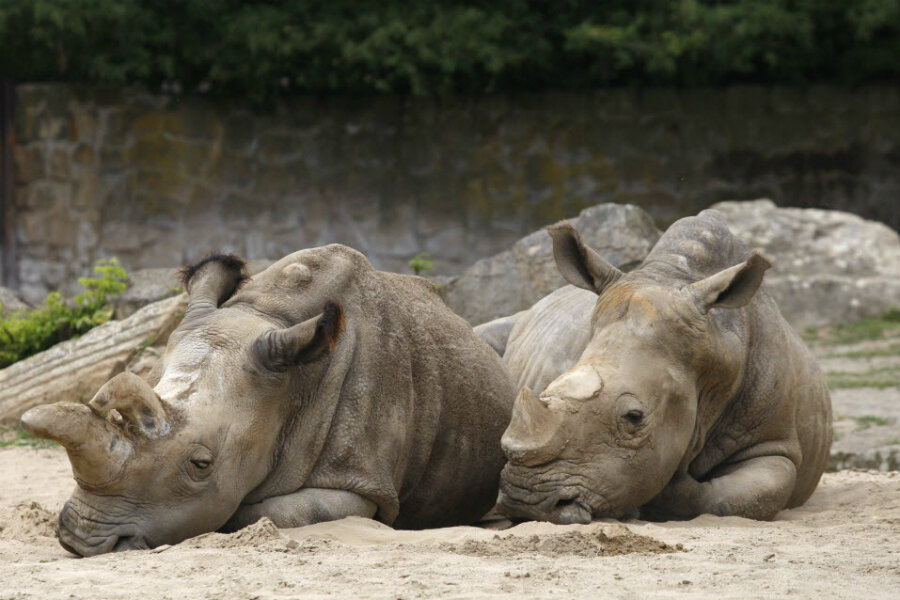Why one rhino has an armed security detail
His name is Sudan and he is the last known male northern white rhinoceros in the world. Now, international wildlife conservationists are doing everything they can to keep Sudan safe in the hope that he will mate with one of the remaining white rhinos brought to the Ol Pejeta Conservancy in Kenya in 2009.
The conservancy reached an agreement with the Dvur Kralove Zoo in the Czech Republic to bring four Northern White Rhinos, males Sudan and Suni, and females Najin and Fatu, to a more natural habitat in order to increase their odds successfully reproducing, according to ABC News. Attempts at mating the rhinoceroses in captivity had previously failed. In October 2014, the conservancy announced the death of Suni.
But when caring for rhinos outdoors, conservationists face a new challenge: poachers. Since 2009, the number of rhinos killed in South Africa alone has essentially doubled every other year, topping out at 1,215 last year, according to SaveTheRhino.org. Poachers target rhinos for their keratin horns that fetch hefty sums in markets like China and Vietnam, where they are thought to have medicinal value.
Fear not, however – as Sudan roams the 3,229-square-foot conservancy, armed guards keep watch, according to ABC. In addition to providing a security detail, the conservancy taken other measures to protect Sudan.
“Because of the poaching crisis, one of the measures was to remove horns,” Richard Vigne, CEO of Ol Pjeta told ABC. "Not all of it, but hopefully enough to reduce their attractiveness for poachers.”
Park rangers are getting help from drones in the fight against illegal poaching as well. In April, the Monitor detailed the Air Shepard initiative from the Lindbergh Foundation that gives grants for adopting scientific innovations to suit environmental issues. In this case, park rangers will use drones to to patrol high-probability poaching areas that would be inefficient or dangerous to patrol by truck, plane, or on foot.
The final product: the potential to launch flight crew teams in various parks and wildlife refuges who will use computer-based predictions to create preprogrammed flight plans for a series of drones to patrol areas known for poaching activity.
The silent, unmanned aircraft can be launched and flown constantly during high-probability poaching hours – often overnight when patrols by humans would be dangerous – and in areas prone to poaching activity. Infrared cameras and GPS technology in each drone relay data back to a mobile command post.
But time is not on the side of the rhino conservationists, Sudan is 42 years old, and has already outlived Suni by eight years. Two months after Suni passed, the second-to-last male Angalifu, who was at the San Diego Zoo Safari Park, died at age 44. If Sudan can not reproduce, the only other option remaining to ensure the survival of the northern white rhino may be in-vitro fertilization.
But in-vitro fertilization comes with its own set of issues, like genetic identity. The experiment may involve a southern white rhino surrogate mother, the Monitor reported:
Scientists who have studied the critically endangered animal claim that dramatic population loss has reached the point at which inter-crossing the two subspecies will likely be necessary for the survival of the northern white rhino. Geneticists view breeding rhinos across subspecies as a last resort of sorts, because of the possibility that the genes of the northern white rhino would not be preserved.







